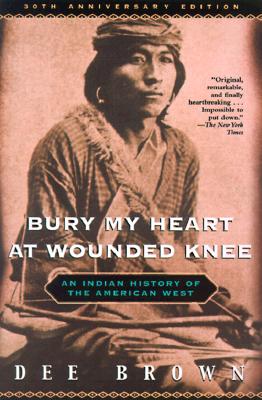Bury My Heart at Wounded Knee: An Indian History of the American West
Dee Brown

This had been on my to-read list for a long time, and I finally picked it up as an e-book from the library. I’m glad I did.
The book is essentially the story of the U.S. conquest of the American West between 1860 and 1890, via the dispossession of Native Americans. The author is not himself Native American, but very much tells the story from the Native American perspective, as much as possible via the recorded words of those who were the victims. It is very much a polemical history, and in many places I got the sense that Brown was omitting or downplaying events that would have reflected negatively on the Native Americans. But I think given the history, I don’t blame him for that. It wasn’t the time for writing a “fair and balanced” account.
I enjoyed learning a bit more about some of the Native American leaders who became famous, such as Sitting Bull, Crazy Horse, and Red Cloud–the book gave a great sense of their personalities, which I had never gotten anywhere else. I especially liked Crazy Horse, an independent soul who wouldn’t allow himself to be photographed and a mystic who drew on his visions to develop unconventional battle tactics.
Around the same time that I was reading this, I watched the two Errol Morris films, “The Fog of War” (about Robert McNamara) and “The Unknown Known” (about Donald Rumsfeld). There is an unmistakable link between the events recounted in the book with the more recent films: while the United States has many admirable qualities, part of the reason it has attained the position of power that it holds today is because when it comes down to it, the U.S. has been willing to disregard moral concerns to get what it wants. John Chivington’s Sand Creek massacre and Curtis LeMay’s firebombing of Tokyo are cut from the same cloth.